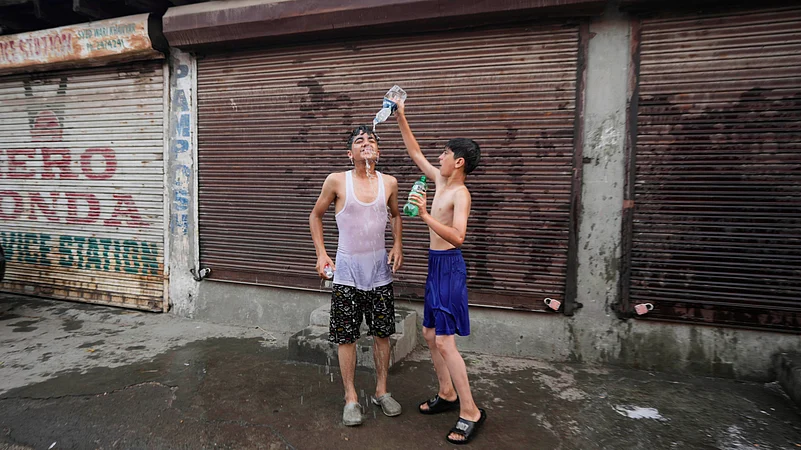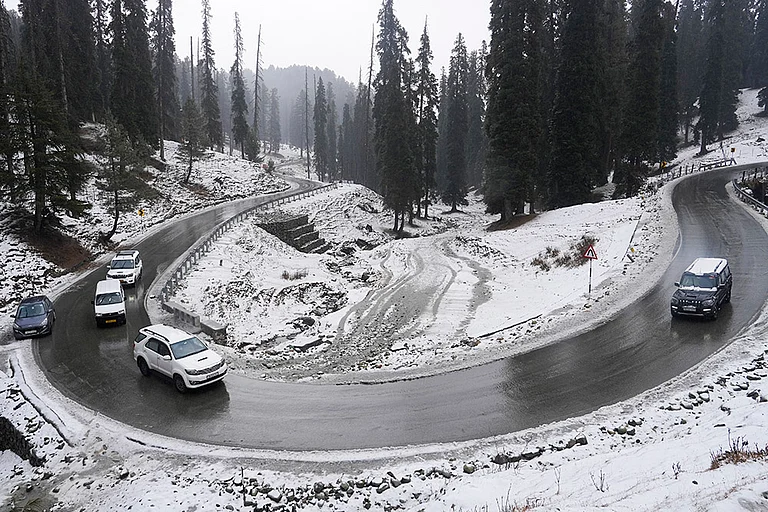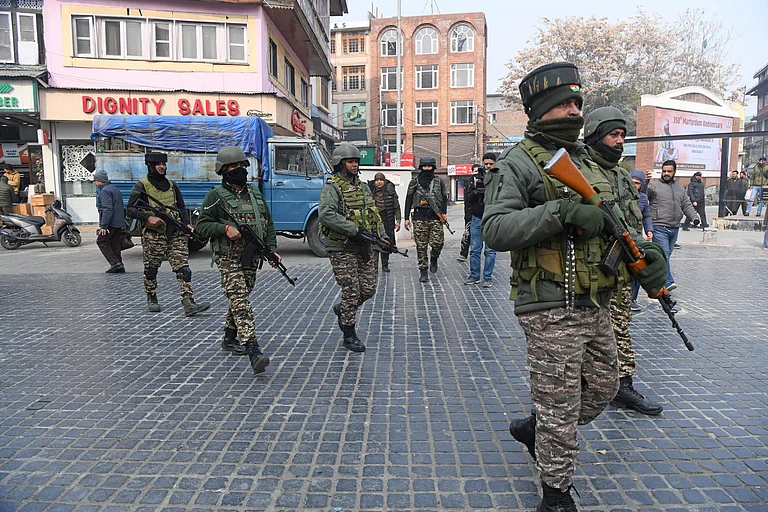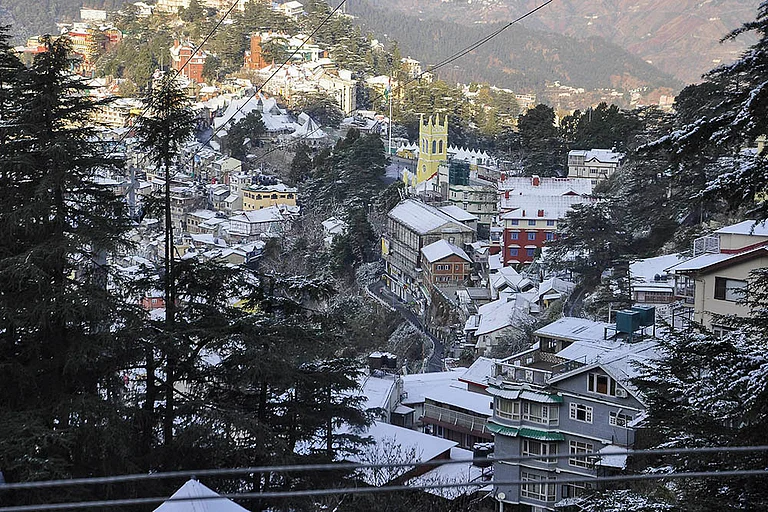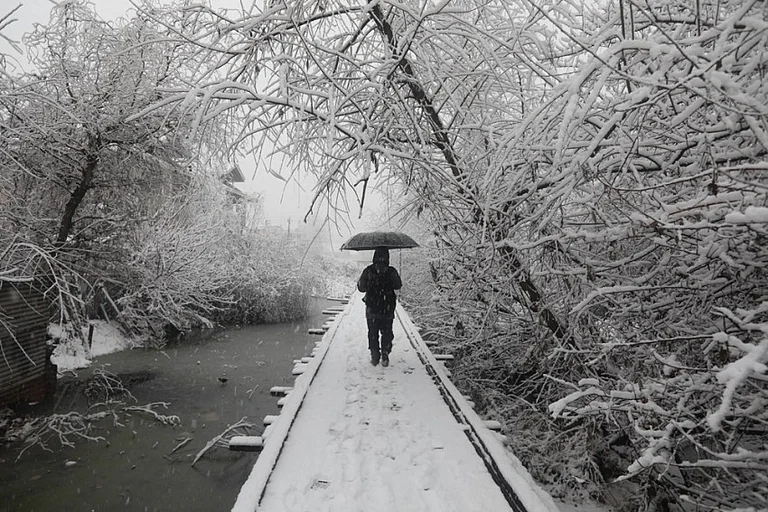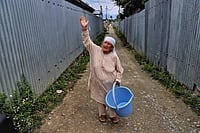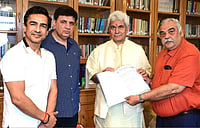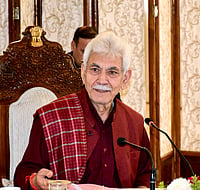It’s 33.7°C in Srinagar, and the roads are almost deserted. That’s normal heat levels for a Monday morning in July in Delhi or Chennai, but it has sent the residents of the summer capital of Jammu and Kashmir running for cover. With the sun beating down on residents like never before—on Saturday, the temperature was the highest ever in seventy years—schools have decided to shift to “hybrid” mode, and people have been told to use umbrellas when outdoors in the daytime.
Experts are warning that this isn’t just a hot spell but an extremely dry one—and the worst could still be around the corner: orchards might dry up, and, ironically, cloud bursts might be triggered by the extreme heat.
It was certainly unusual for Srinagar, at an elevation of 1,585 m and nestled between the Pir Panjal and Greater Himalayas, to be warmer than Amritsar in the plains (30.8°C), Chandigarh (33.3°C), Ajmer (32.8°C), Ambala (32.8°C), Palam in Delhi (33.5°C), and low-lying (435 m) hilly town Dehradun (29.8°C). It also beat Manali, at an elevation of 2,050 m (27.5°C) and Jammu, at merely 327 m (31.6°C).
Experts in Kashmir blamed lax regulation of construction activities, especially around the water bodies and wetlands of the valley for the weather disruptions. They also said massive construction activity in parts of Srinagar city was responsible for the poor conditions for this time of year. Not just that, they said the need for green cover has been completely overlooked in a fast-expanding city, leading to the current heat wave.
“It’s a very grave situation. The Western Disturbances, responsible for major weather conditions in Kashmir, are less moist, and so there’s a lack of rainfall. Local phenomena are responsible for this too.
Wetlands and water bodies that would have maintained the vaporisation cycle have been encroached on. There is haphazard construction along the water bodies. All these are leading to changes in the weather patterns,” said urban geology, watershed development and climate change expert, Professor M Sultan Bhat, who teaches at the University of Kashmir.
Western Disturbances are east-moving storm systems that originate in the Mediterranean region and bring winter rain and snowfall to this part of the Indian subcontinent.
But even more worrying, said Prof Bhat, would be flash floods, often an outcome of extreme heat waves like this one. “A moist gust of Western Disturbances and excessive vaporisation due to heat could result in flash floods,” he warns.

Already, normal life is disrupted due to the heat wave. Schools were closed for the summer break, and will now not reopen fully for another fifteen days. State Education Minister, Sakeena Itoo, said in a post on X: “We are reopening schools from tomorrow in Kashmir Division and Winter Zones of Jammu Division. Srinagar and other municipal limits: 7:30 AM – 11:30 AM, outside municipal limits (rural): 8:00 AM – 12:00 Noon after a 1-hour break, 2 online classes will follow. Teachers to remain available till 2 PM.”
Environmental activists blame the authorities for the dry spell, which, they say, might hurt tourism too. “It will have a major impact on Kashmir’s economy—our tourism will be impacted, as would agriculture and horticulture,” said Raja Muzaffar Bhat, a social and environmental activist in Kashmir.
He said that even in the upper reaches of the Kashmir valley, the temperature these days was hot and dry, though it is the urbanised zones that are feeling the worst of these conditions.
Advocate Nadeem Qadri, an environmental lawyer who is also the chief executive officer of Jammu and Kashmir Eco-Watch, an NGO, said, “more action is needed to check the impact of climate change on the region, particularly by checking encroachments into wetlands”.
The heat wave is not the only erratic feature of the current weather patterns in Kashmir and around. There have been more spells of lower-than-usual snowfall and heat waves are more common than ever. The absence of vegetation over Srinagar, once a green city, is also responsible.
According to Prof Sultan Bhat, industrial emissions are rare in Kashmir as the region has few manufacturing units. However, vehicular pollution is certainly a contributing factor to the local conditions.
Mukhtar Ahmad, Director of the Indian Meteorological Department in Srinagar, said Kashmir faces a dry spell and the “extreme weather conditions were likely to continue”. He also confirmed the possibility of flash floods.
The Meteorological Centre at Srinagar has said in an advisory that farmers must suspend cultivation from July 6 to July 9, predicting a possibility of “flash floods at a few vulnerable places with landslides, mudslides and shooting stones”. It has also said that there is a possibility of “a rise in water level in rivers and streams and water logging in a few low-lying areas.”
Fayaz Bakshi, an activist and hotelier, said tourism cannot escape the impact of these stark changes in the climate and weather conditions. “If things go like this and our temperature approaches that of other states, people would not include Kashmir in their travel itinerary,” he predicted.
Experts and locals spoken to said strong measures to protect the environment are urgently required. The priority, they said, is returning the region to a robust environmental cycle by preserving its water bodies.






